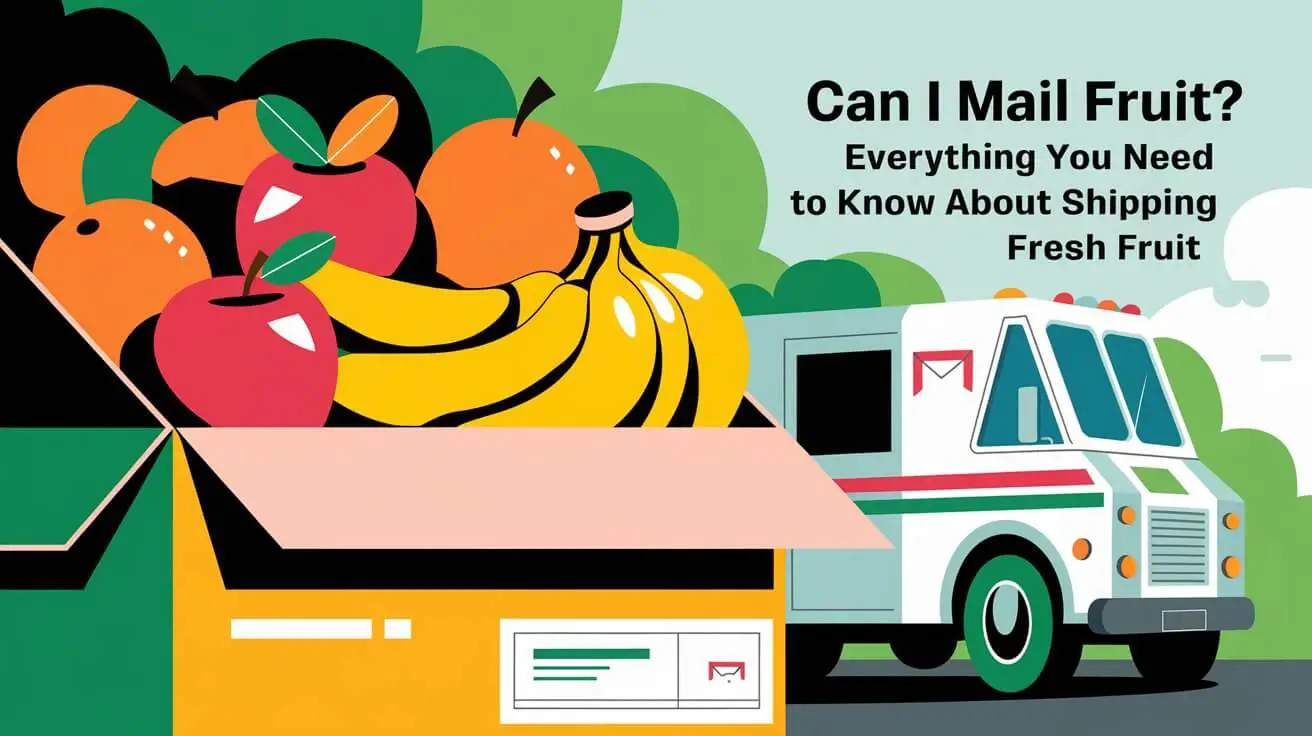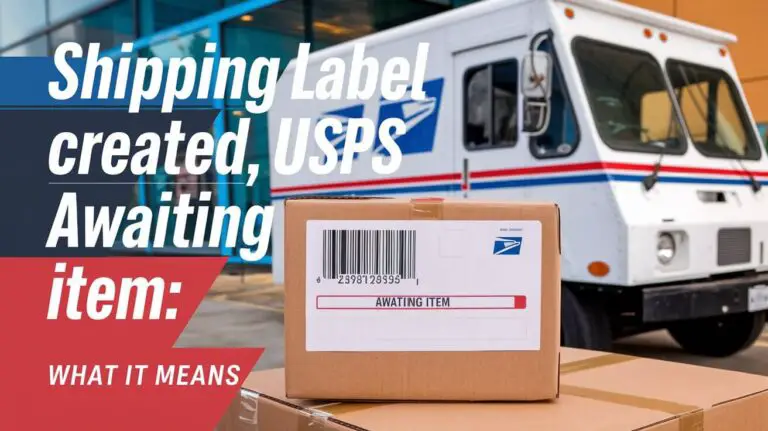Can I Mail Fruit? Everything You Need to Know About Shipping Fresh Fruit

Shipping fresh fruit can be tricky, but with the right preparation, it’s entirely possible to send fruit across states or even internationally while ensuring it arrives in perfect condition. Whether you’re mailing a small batch of home-grown produce or need to ship bulk orders as part of a business, understanding the necessary regulations, packaging techniques, and shipping methods is key. In this guide, we’ll cover everything you need to know about mailing fresh fruit—from legal considerations to packaging tips and best shipping methods.
Can You Legally Ship Fruit?
Shipping fruit isn’t as simple as boxing it up and dropping it at the post office. You need to be aware of several regulations at both federal and state levels to ensure your shipment is legal and compliant.
Federal Regulations
In the United States, it’s generally legal to ship fruit domestically. However, restrictions apply, especially if you’re shipping from or to states with agricultural quarantine zones. The USDA (United States Department of Agriculture) monitors the spread of pests and diseases that could harm local crops, so some fruits might require inspection or certification before they can be shipped.
State-Specific Laws
Many states have their own regulations about which fruits can be mailed, especially if they are known for their agricultural output. For example, California and Florida have strict rules regarding fruit shipments due to the prevalence of citrus fruits. Shipping prohibited fruits into these states could result in fines or the destruction of your shipment.
It’s essential to check the regulations of both the state you’re shipping from and the state you’re shipping to. A quick call to the state’s Department of Agriculture can provide clarity on any restrictions.
International Shipping Regulations
When shipping fruit internationally, the rules become even stricter. Most countries require shipments to include a phytosanitary certificate, which certifies that the fruit is free of pests and diseases. You’ll also need to comply with customs regulations, which vary by country. Some countries, like Australia, have very stringent biosecurity laws that prohibit the import of fresh fruits altogether.
What Fruits Can You Ship?
Not all fruits are suitable for mailing. Knowing which fruits can handle the rigors of shipping and which cannot will help ensure that your shipment arrives in great condition.
Permissible Fruits
Fruits with tougher skins or longer shelf lives are better suited for shipping. Here are a few examples of fruits you can typically ship:
- Apples: Firm and relatively resistant to bruising, making them a good option.
- Oranges: Citrus fruits with a thicker peel, reducing the risk of damage.
- Pears: When slightly underripe, pears can handle the transit well.
- Peaches (if underripe): Though delicate, peaches can be shipped when they’re a bit firm.
Fruits to Avoid
Highly perishable fruits, those with thin skins, or those prone to bruising and rapid spoilage are not ideal for mailing. Examples include:
- Bananas: They bruise easily and ripen quickly in warm environments.
- Berries: Fragile and prone to spoilage unless shipped in temperature-controlled conditions.
- Figs: Soft and sensitive, figs don’t withstand the pressures of mailing well.
How to Package Fruit for Shipping
Proper packaging is one of the most important factors in successfully mailing fruit. Without adequate protection, fruit can bruise, spoil, or be damaged in transit.
Best Packaging Practices
First, choose the right packaging material. Fruits should be individually wrapped to protect them from bruising. You can use materials such as:
- Bubble wrap: Ensures each fruit is cushioned and protected.
- Tissue paper: For softer fruits, wrapping in tissue paper provides a buffer to prevent skin damage.
Once the fruits are individually wrapped, pack them into a sturdy shipping box. Corrugated cardboard boxes work best because they can withstand external pressure during transit. Ensure there’s enough space to include cushioning materials such as foam inserts or packing peanuts.
Ventilation and Moisture Control
It’s important to pack your fruit in a way that allows for ventilation. Some fruits, like apples, continue to respire after they’re harvested, which means they release gases and moisture. Without ventilation, moisture can build up, leading to mold or rot.
Using moisture-resistant materials, such as packing paper or foam liners, can help absorb any excess moisture, keeping the fruit dry and fresh.
Cushioning Techniques
Cushioning is critical to preventing bruising. Here’s how you can cushion your fruit properly:
- Packing peanuts: These can fill the gaps between fruits, preventing movement.
- Foam inserts: These are perfect for stabilizing each piece of fruit, ensuring they don’t move during transit.
Pack the fruit tightly but not too tightly—there should be enough room for air to circulate, but not so much that the fruits can shift and collide.
Sealing and Labeling
Once packed, seal all seams of the box with packing tape. This prevents accidental openings during transit. Don’t forget to label the box as “Perishable” and, if possible, note the contents (e.g., “Contains Fresh Fruit”). This alerts postal workers to handle the package with care.
Shipping Methods: Speed is Key
The method you choose to ship your fruit will greatly impact how fresh it is upon arrival. Perishable fruit should spend as little time in transit as possible.
Choosing the Right Carrier
Not all shipping carriers handle perishables the same way. Here are some common options and their features:
- USPS Priority Mail: This is a good option for shipping fruit domestically. Priority Mail offers 1-3 day delivery, which is ideal for perishable items.
- FedEx Express: If you need even faster delivery, FedEx Express offers overnight and 2-day delivery options.
- UPS Next Day Air: This is a great option for ensuring that your fruit arrives as fresh as possible. For less perishable fruit, you can opt for UPS 2nd Day Air.
Cost-Effective Solutions
While shipping quickly is key to preserving freshness, it can be expensive. Here are a few tips for balancing cost and speed:
- Use flat-rate boxes: USPS offers flat-rate Priority Mail boxes that allow you to ship heavier items at a fixed rate.
- Consolidate shipments: If you’re mailing a large quantity of fruit, try consolidating multiple orders into a single shipment to save on costs.
Tracking and Monitoring Shipments
Regardless of which carrier you choose, always opt for a shipping option that includes tracking. This allows both you and the recipient to monitor the package and ensure that it doesn’t encounter any delays. Many carriers offer real-time tracking, so you can see exactly where the package is at any given time.
Managing Temperature Control for Perishable Fruit
Certain fruits, especially those with a high water content or those that ripen quickly, need to be kept cool to prevent spoilage during shipping.
Insulated Shipping
Insulated packaging is a great way to protect fruits that are sensitive to heat. Insulated boxes or liners help to maintain a stable internal temperature, even if the package is exposed to heat externally.
Refrigerated Shipping Options
For bulk or long-distance shipments, you might want to consider refrigerated shipping. Companies that specialize in perishable goods can offer temperature-controlled trucks or air freight that maintains a consistent temperature from pickup to delivery.
For smaller shipments, gel packs or dry ice can be used to keep the package cool.
Preventing Spoilage
Sudden temperature changes can cause fruits to spoil, so it’s essential to avoid situations where the package might be exposed to extreme heat or cold. Shipping early in the week, avoiding holidays, and choosing fast delivery methods can all help reduce the risk of spoilage.
Domestic vs. International Shipping
Shipping fruit within the country is more straightforward than international shipping, but both come with unique challenges.
Domestic Fruit Shipping Tips
When shipping fruit domestically, aim to mail packages earlier in the week to avoid the risk of them sitting in a warehouse over the weekend. Avoid shipping near holidays when postal services are overwhelmed, as this could lead to delays.
International Shipping Considerations
Shipping fruit internationally requires more planning and often additional paperwork. Many countries have strict rules about importing agricultural goods. Before mailing fruit abroad, research the specific requirements for the destination country, including whether a phytosanitary certificate is required.
Customs Documentation
When shipping internationally, always ensure that you have the necessary customs documentation in place. A phytosanitary certificate certifies that the fruit is pest-free and meets the importing country’s standards.
Shipping Fresh Fruit as a Business
If you plan on shipping fruit as part of a business, there are additional factors to consider.
Considerations for Businesses
As a business, shipping fruit requires bulk orders and more attention to detail. Working with reliable freight carriers who specialize in perishable goods is crucial. You’ll also need to ensure that your business complies with all USDA and FDA regulations for fruit distribution.
Navigating Regulatory Compliance
Staying compliant with regulations is critical to avoid legal issues. Regulations may change frequently, especially in regard to pest control, so keep up with updates from the USDA or FDA to ensure your shipments meet the latest standards.
Cost Management
Shipping fruit regularly can become costly. To manage expenses, try consolidating shipments when possible, or negotiate rates with carriers for frequent shipments.
Important Precautions for Successful Fruit Shipping
Timing Your Shipments
Shipping fruit early in the week ensures that it doesn’t sit in a warehouse over the weekend, which could increase the chances of spoilage. Choose expedited shipping options to minimize the time the fruit spends in transit.
Climate Considerations
The local climate at both the origin and destination plays a role in how you should pack and ship your fruit. Hot climates require extra attention to temperature control, while cold climates could cause fruits to freeze during transit.
Preventing Fruit Damage
Take every precaution to preventdamage during shipping by using proper cushioning and packaging materials. Even with well-designed packages, rough handling or accidental drops during transit can cause harm to the fruit, so ensure that you take steps to minimize the risk of physical damage. Cushioning materials like packing peanuts, foam inserts, and bubble wrap are essential tools to keep fruit from shifting or bumping into one another.
FAQs About Shipping Fruit
What’s the Best Carrier for Mailing Fruit?
The best carrier for mailing fruit depends on your destination and budget. For domestic shipments, USPS Priority Mail offers a good balance between speed and cost. If you need faster delivery, FedEx Express and UPS Next Day Air are excellent options. For international shipments, choosing a carrier that specializes in perishable goods or temperature-controlled logistics is ideal.
How Much Does It Cost to Ship Fresh Fruit?
The cost of shipping fresh fruit varies based on the carrier, the weight of the package, the destination, and the shipping method. Using USPS flat-rate boxes can be cost-effective for domestic shipments, especially when shipping heavier fruit. For international shipments or bulk orders, the cost can increase significantly, especially if temperature control is required.
Can I Ship Fruit with Dry Ice or Gel Packs?
Yes, shipping fruit with dry ice or gel packs is a common way to maintain a stable temperature during transit. However, be sure to check the carrier’s regulations regarding dry ice, as some carriers have specific rules about how much you can use and how it must be packaged.
What Happens if My Fruit Gets Damaged in Transit?
If your fruit gets damaged during transit, it’s important to have documentation of the damage. Most carriers offer limited insurance for perishable items, but this can vary depending on the shipping method and the carrier. For businesses, it’s a good idea to offer some kind of return or refund policy for damaged goods to maintain customer trust.
Conclusion
Shipping fruit can be a delicate process, but with the right preparation, it’s possible to ensure that your fruit arrives fresh and undamaged. From understanding federal and state regulations to choosing the best packaging materials and shipping methods, taking these precautions will help protect your fruit during transit. Whether you’re shipping to a friend, sending a gift, or running a business that ships fresh fruit, paying attention to timing, packaging, and legal requirements is key to success. Always consider the type of fruit you’re shipping, choose fast and reliable shipping methods, and invest in proper cushioning and temperature control where necessary to keep your fruit fresh and delicious when it arrives.
In short, mailing fruit is entirely possible, but it requires care and attention to detail. By following the tips outlined in this guide, you’ll be well on your way to mastering the art of shipping fresh fruit.






